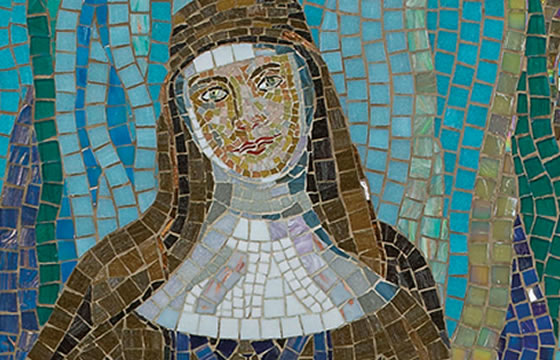 The credibility of using scapegoats as a way to bring about social cohesion has been exposed by Jesus, the Gospels and the life of Australia’s Saint Mary MacKillop as a lie.
The credibility of using scapegoats as a way to bring about social cohesion has been exposed by Jesus, the Gospels and the life of Australia’s Saint Mary MacKillop as a lie.
Have you done any scapegoating lately? It’s something we all try from time to time. Perhaps a falling out with a friend has occurred, and then concord is achieved during a gossip session about someone else. Or things are a bit difficult at work, and it’s all too complicated to approach those concerned, so coming home and finding nothing done as promised, we become roaring terriers for order and loyalty. In the face of a crisis, human beings often avoid its promise of violence by pointing the finger at someone else. It’s called scapegoating.
Matters of great moment have been the subject of scapegoating throughout human history. As French historian and philosopher of social sciences René Girard demonstrates, the displacement of blame for situations of social distress have traditionally been relieved by whole societies turning on a ‘scapegoat’.
Such a one had to be without the means of revenge, which would have brought more violence into the situation. So a foreigner, someone different, someone without family or social supports would fit perfectly. Ancient societies dealt with matters they could not understand or control, such as plagues and other natural disasters in this way, as well as dealing with communal violence arising from their own rivalries. Finding a common enemy diffused internal squabbling and hatreds for a while, as everyone focused on the convenient scapegoat. Such a way of solving problems could not last, of course, and so had to be repeated over and over, for millennia.
The practice of scapegoating formed cultural and religious means of returning communities to harmony.
In our own day we can identify attempted scapegoating. The Nazis did it to the Jews, heaping onto them blame for Germany’s historical woes and for the situation after World War I.
Even our own St Mary MacKillop became a scapegoat. The Catholic Church in early Australia experienced enormous crises. Adelaide is a vivid example. Among many problems, the people were generally poor, and the Catholics were a minority viewed with suspicion. Their determination to establish schools brought upheaval in the Church itself as well as in the general society. Diocesan crises involving authority, the structures of education, lack of priests, and burdensome debt dogged the Bishops of the time, Laurence Sheil and then Christopher Reynolds. Both lacked adequate administration skills and were hamstrung by poor advisers.
On more than one occasion Mary MacKillop found herself unjustly blamed for causing elements of these crises. She embodied the classic features of a scapegoat. She was different – a woman in leadership in a male-oriented society and church, who was responsible for initiating an unusual form of Religious Life. Without adequate means of defence she had no redress. She lacked a champion.
Traditional scapegoating always involves some violence to the scapegoat. By killing, expelling or incarcerating the victim, society rids itself of the entity believed to be responsible for the social unrest. In Mary MacKillop’s case, expulsion occurred, both in her excommunication of 1871 and her dismissal from Adelaide in 1883. She was even accused of drunkenness, resulting from misunderstanding of her health and from the jealousy and gossip of some close to her.
Even though scapegoating is attempted in our times, as can be seen from Mary’s life, its validity as a means of bringing social cohesion has long been exploded. It was unveiled as a lie by Jesus himself. The Gospel revelation of Jesus’ life, death and resurrection shows him as the innocent victim who identifies himself with all society’s victims. Every culture influenced by Christianity has been affected (whether acknowledged or not) by a growing yet incomplete understanding of the innocence of the victim.
So, as a result of the Gospel, scapegoating is no longer believable. The lie has been revealed. Even if scapegoats are guilty of some crime or offence, they cannot be held responsible for wide social crises. For example, the scapegoating of asylum seekers or certain ethnic or religious groups are transparent acts of displacement of blame for some social or political reason. Courtesy of the Gospel and with some reflection, people can spot the scapegoats and know them as victims.
Girard’s insights bring a fresh reading and understanding of the social conditions in which we find ourselves, and to the responses which we continue to make. It is instructive to identify the patterns of scapegoating which occur in history. However, Mary MacKillop herself, with her title of ‘Mary of the Cross’ would surely want us to give time and effort to identifying those situations in our time where people are victimised to achieve some personal, political, religious or social gain. She would no doubt desire that we recognise it and respond to it for what it is: scapegoating.
The feast day for St Mary MacKillop is 8 August.
1. René Girard. Violence and the Sacred. Translated by Patrick Gregory. London: Continuum, 1988.
2. www.abc.net.au/news/2010-10-14/mary-mackillop-life-and-times/2297916